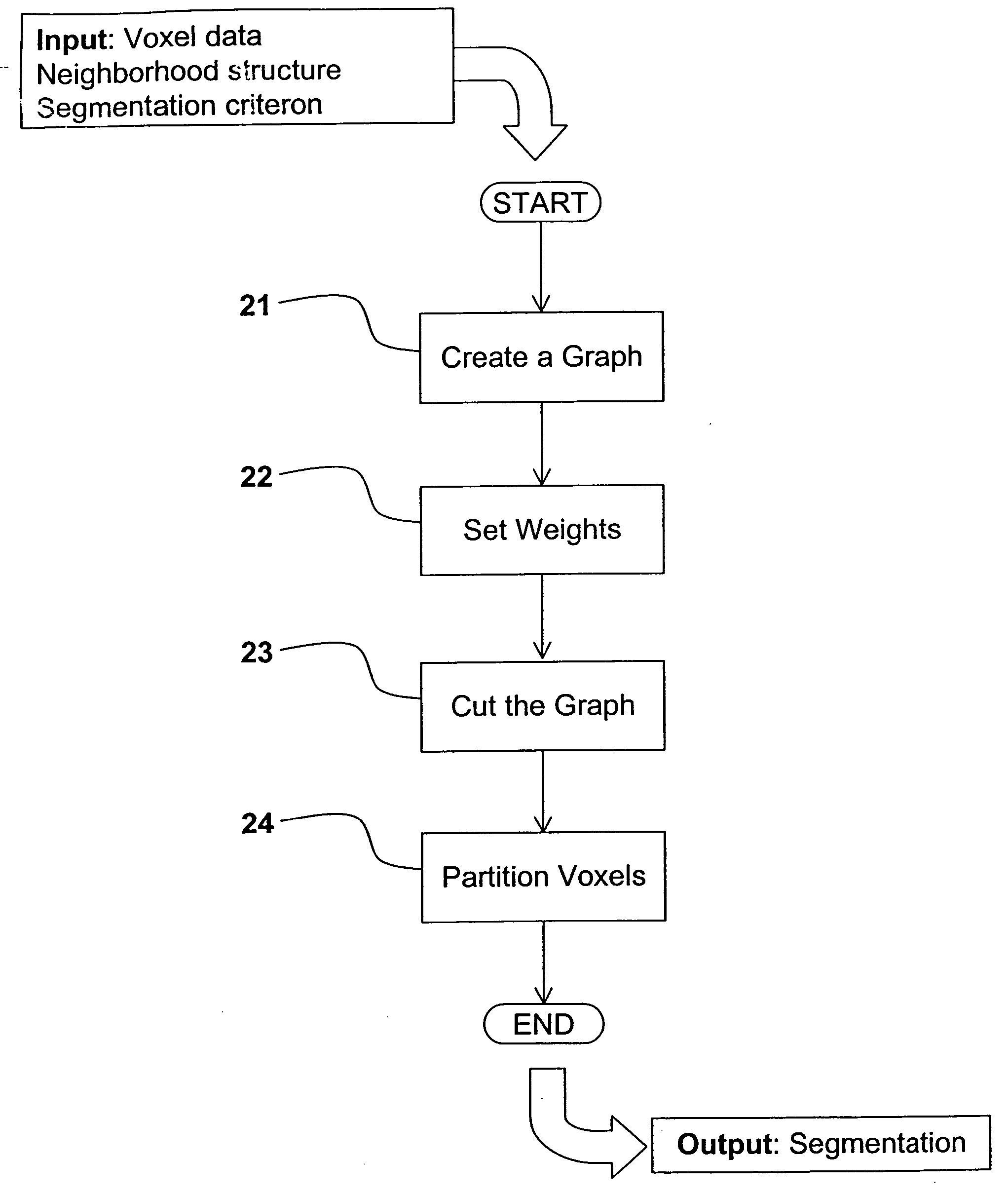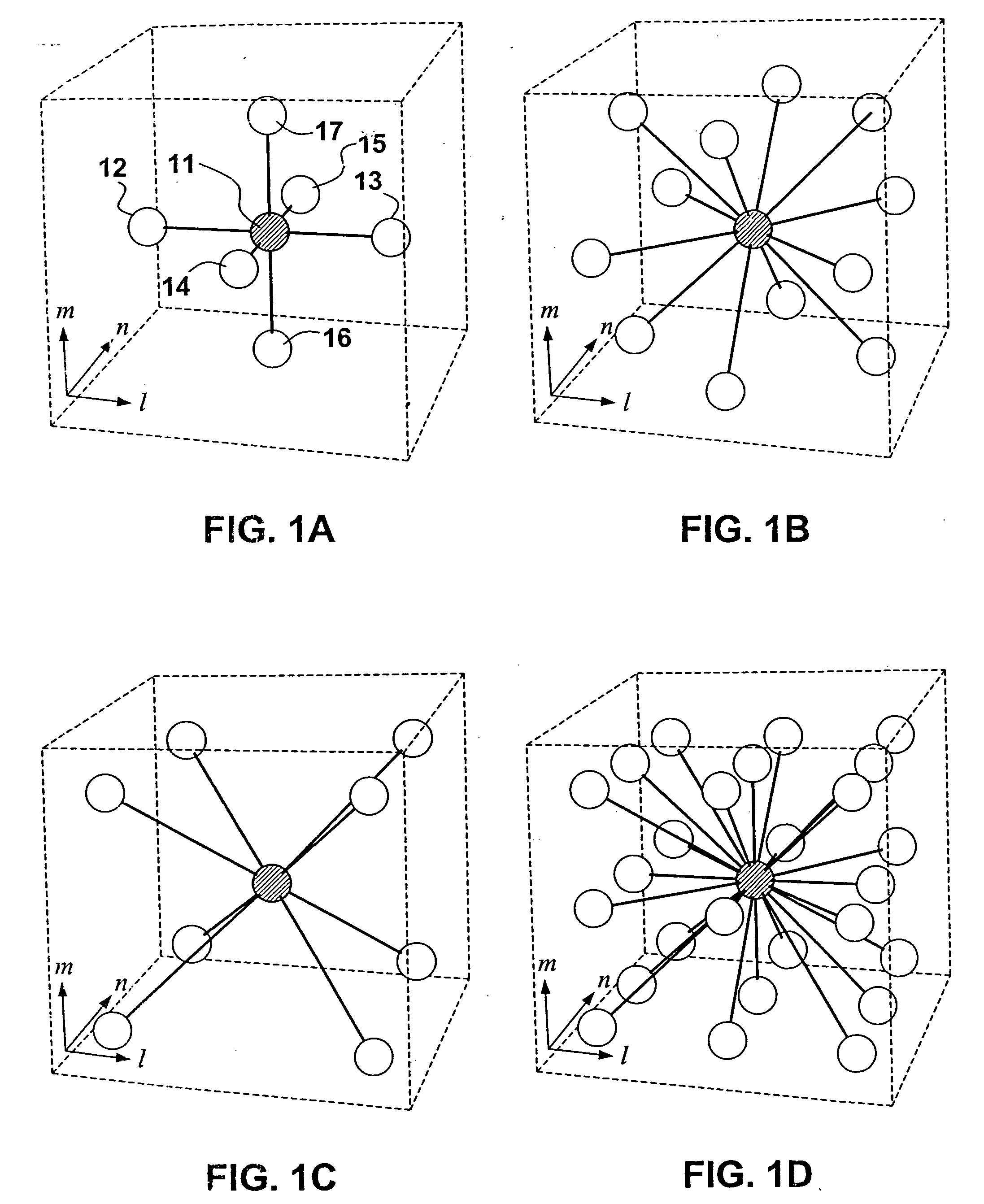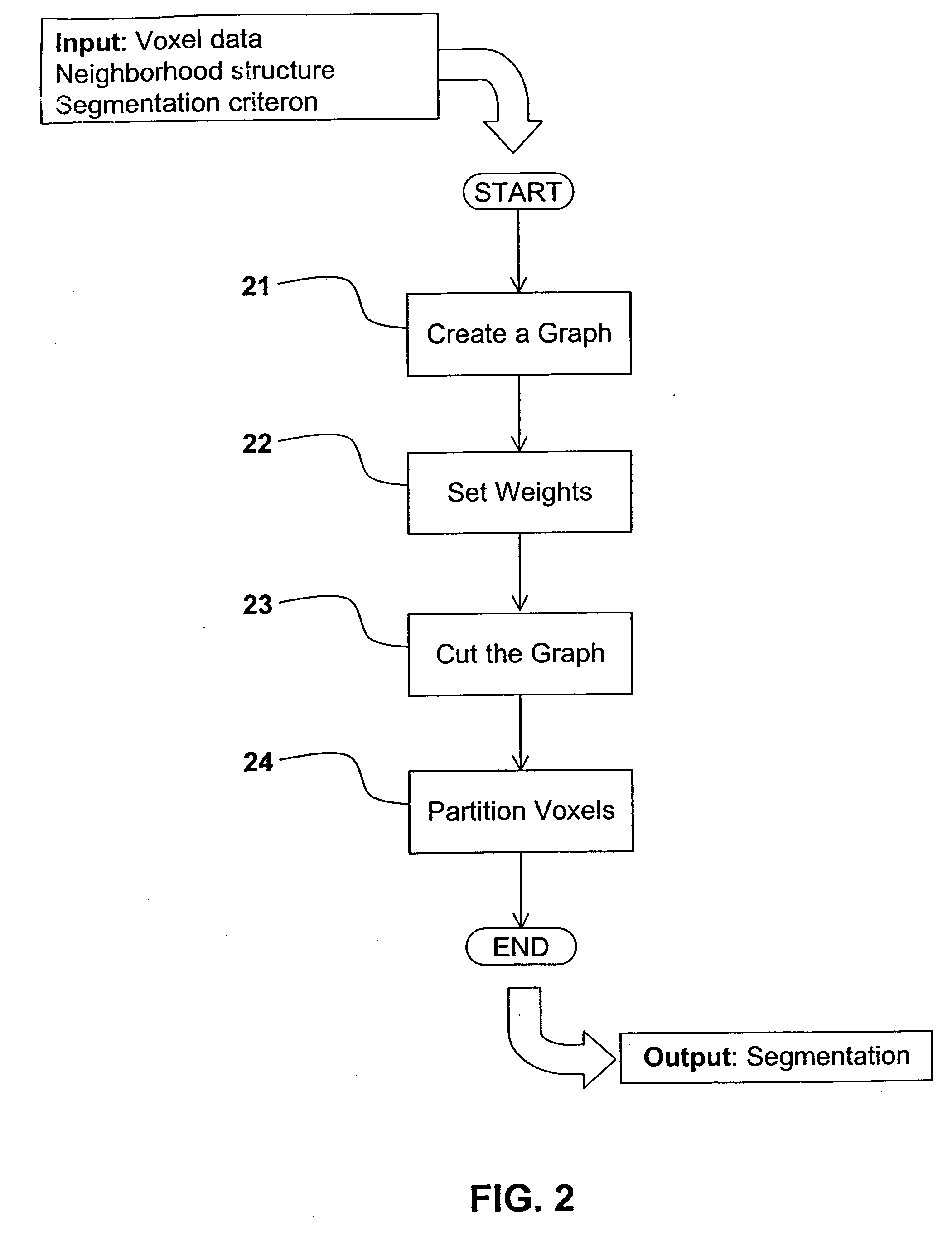Method and apparatus for segmenting an image in order to locate a part thereof
- Summary
- Abstract
- Description
- Claims
- Application Information
AI Technical Summary
Benefits of technology
Problems solved by technology
Method used
Image
Examples
Embodiment Construction
General Description
[0027] Hereafter, the dimension of the input data is denoted by DIM. For three dimensions, DIM=3.
Input
[0028] In the segmentation problem that the present invention solves, a DIM-dimensional data structure stored in the memory of a computer system is given as the input to the method, which usually is realized as a computer program. In medical applications, the data is typically acquired by non-intrusive methods such as computed axial tomography (CAT) systems, by magnetic resonance imaging (MRI) systems, or by other non-intrusive mechanisms such as ultrasound, positron emission tomography (PET), emission computed tomography (ECT) and multi-modality imaging (MMI), and stored in the memory of a computer system. The data structure will be called an “image” hereafter, and comprises voxels and neighborhood structure: [0029] i. Each voxel has associated data, such as a number or a set of numbers (vector). Voxels are conceptually laid out in a DIM-dimensional configur...
PUM
 Login to View More
Login to View More Abstract
Description
Claims
Application Information
 Login to View More
Login to View More - R&D
- Intellectual Property
- Life Sciences
- Materials
- Tech Scout
- Unparalleled Data Quality
- Higher Quality Content
- 60% Fewer Hallucinations
Browse by: Latest US Patents, China's latest patents, Technical Efficacy Thesaurus, Application Domain, Technology Topic, Popular Technical Reports.
© 2025 PatSnap. All rights reserved.Legal|Privacy policy|Modern Slavery Act Transparency Statement|Sitemap|About US| Contact US: help@patsnap.com



